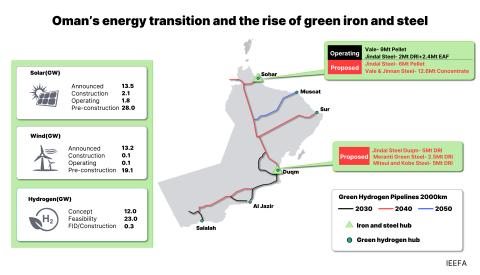Risks associated with natural gas pipeline expansion across Appalachia
Download Full Report
View Press Release
Key Findings
The Federal Energy Regulatory Commission is considering applications for construction of two major natural gas pipelines that would run from West Virginia into North Carolina and Virginia: the Atlantic Coast Pipeline and the Mountain Valley Pipeline.
In October 2014, Moody’s Investors Service characterized the proposed pipeline build-out from the Marcellus and Utica shale region as “the start of a once-in-a-lifetime build-out cycle.”
A coordinated planning process for natural gas infrastructure could serve as a check on the tendency of individual pipeline developers to overbuild.
Executive Summary
Major utilities, pipeline companies and natural gas producers are proposing construction of two new natural gas pipelines into Virginia and North Carolina from the Marcellus and Utica shale region of West Virginia.
Developers of the Atlantic Coast Pipeline and the Mountain Valley Pipeline, which would cost a total of nearly $9 billion to complete, have applied to the Federal Energy Regulatory Commission for approval.
The pipelines are proposed to go into service in 2018. They would be part of a larger expansion of natural gas pipeline infrastructure from the Marcellus and Utica shale region in Appalachia that has been described by Moody’s Investors Services as an “once-in-a-lifetime build-out cycle” driven by the recent boom in natural gas production.
Some participants have openly acknowledged the likelihood of overbuilding, as when Kelcy Warren, CEO of Energy Transfer Partners, said in an earnings call last year that overbuilding is part-and-parcel of the industry (“The pipeline business will overbuild until the end of time,” Warren said).
This report shows how the Atlantic Coast and Mountain Valley pipelines are emblematic of the risks that such expansion creates for ratepayers, investors and landowners.
Among its conclusions:
- Pipelines out of the Marcellus and Utica region are being overbuilt.
- Overbuilding puts ratepayers at risk of paying for excess capacity, landowners at risk of sacrificing property to unnecessary projects, and investors at risk of loss if shipping contracts are not renewed and pipelines are underused.
- The Federal Energy Regulatory Commission facilitates overbuilding. The high rates of return on equity that FERC grants to pipeline companies (allowable rates of up to 14%), along with the lack of a comprehensive planning process for natural gas infrastructure, attracts more capital into pipeline development than is necessary.
- FERC’s approach to assessing the need for such projects is insufficient.
- Industry leaders recognize and acknowledge that current expansion plans will likely result in overbuilding.
- The arguments for the Atlantic Coast Pipeline have not been adequately scrutinized. While the pipeline developers have asserted that some of the gas supplied is needed by Dominion Resources for its new Brunswick and Greensville natural gas plants, Dominion has told the Virginia State Corporation Commission that it can supply those plants through the existing Transco pipeline.
- While ratepayers of the utilities (largely Duke Energy and Dominion Virginia Electric and Power) that have contracted to ship gas through the Atlantic Coast Pipeline would be burdened with the costs of building the pipeline (which would include a profit to the developers, largely Duke and Dominion), they will probably not realize the economic benefits promised by the developers.
- Communities along the Mountain Valley Pipeline face the risk that EQT Corporation (which owns the largest stake in that pipeline and has contracted for the largest volume of capacity on the pipeline) will continue to be harmed financially by weak natural gas prices and will not be a long-term, stable partner for these communities.
This report notes also that much of the $9 billion costs of the projects—aside from the costs embedded in the price of any natural gas that is exported—would ultimately be either added to the price consumers pay for natural gas or absorbed as a loss to project investors.
And it points out that regulators have not considered whether these pipelines are the best use of ratepayer dollars. None of the economic interests within the natural gas industry have any incentive to seriously consider whether alternatives to natural gas - energy efficiency, renewable energy or other forms of power generation - may be cheaper.
Given all of these circumstances, IEEFA recommends the following:
- That the applications for the Atlantic Coast and Mountain Valley pipelines be suspended until a regional planning process can be developed for pipeline infrastructure;
- That FERC lower the returns on equity granted to pipeline developers; and
- That an investigation be conducted into the relatively high failure rate of new pipelines.
Please view full report PDF for references and sources.

















